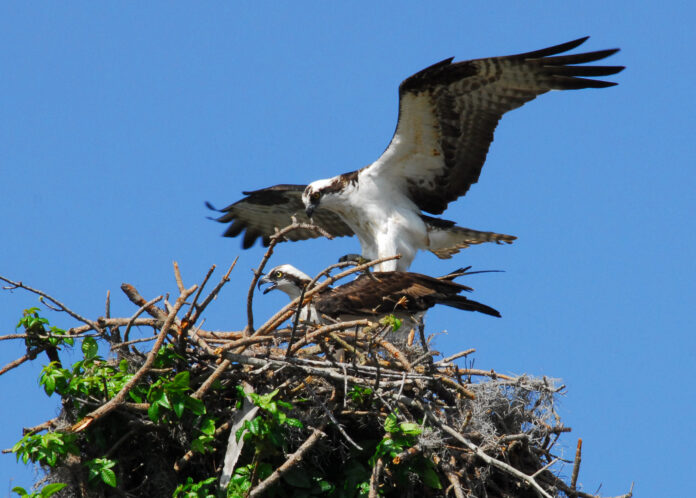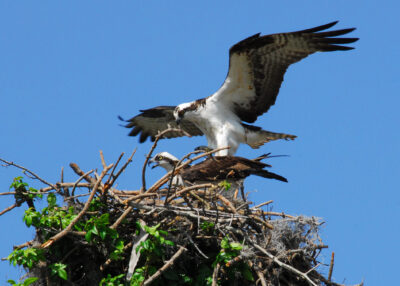
BY HARRY WEEKES

I am writing this in the middle of July, on the downside of training flight season in the world of birds. My journey started in Idaho, with our familiar magpies, robins and kestrels. Currently, I am on the opposite coast of our country, isolating myself with a different suite of birds on Long Island Sound: common terns, American oystercatchers, and osprey.
The script is always similar; there is a gangly, not-quite-completely-feathered fledgling whose world very recently expanded from a nice, secure cup on a branch, or protected hole in a tree, or some other type of nest, to “everything else.” I am feeling an empathy with these baby birds and wondering exactly where the lessons lie.
Is it in the first fledged robin I find, invariably a speckle-chested and totally disoriented youngster standing, stupefied, somewhere on the lawn? Is it in the kestrels, who poke their heads out of the nestboxes, and then, based on some magic I can only guess at, simply explode into the world of flight?
Is it in the terns, who chatter above the water, whose early flights display an enviable elegance? What must it be like to emerge into the world with what appears to be a total mastery of the wind?
More often, I feel like the oystercatchers—whose parents yell just as much as the babies scream. Their beginning flights coalesce around urgent conversations and squabbles, shrill avian discussions to get going, that something important and dire is afoot.
Mostly, though, I have identified with the reluctant baby osprey, who grow, in the nest, to the size of their parents, something that takes them deep into July. This is when the chirping begins in earnest—high, piercing, parental whistles that draw the baby’s attention. In a series of steps, food is gradually removed, first to the edge of the nest, then to a nearby tree, then entirely. Eventually, a combination of hunger, persistent and insistent chortling, and a dawning “I can do this” becomes “I am doing this,” and the bird steps into the world in a great flapping of wings.
The lessons then take to the air, guided by more whistles and chirps, and a growing and intense back and forth transfer between the parents being in charge to the child being in charge.
The independence of flight provides freedom and all of the responsibilities that come with it. It is calm up here. There is a cost to this perspective, though. For osprey, this is directed toward a terrific plunge into the water; all distant gazing focused into one moment. For me, this is riding an air of uncertainty. A new pandemic landscape, one nefarious element of which is a thousand fleeting shimmers in the waters below.
I feel something instinctive, which must be something birds also know—you only get so many plunges. Choose wisely.
In many ways, it is easy to describe these thoughts, especially in the presence of so many avian examples. What is harder to find is balance. The balance and effortlessness between riding on the wind and then drawing your attention to a specific focus. How best to discriminate amongst all of the distractions and choose those most important ones, the ones that nourish you? Needless to say, I am still in training. Birds, though, continue to be wonderful teachers.


